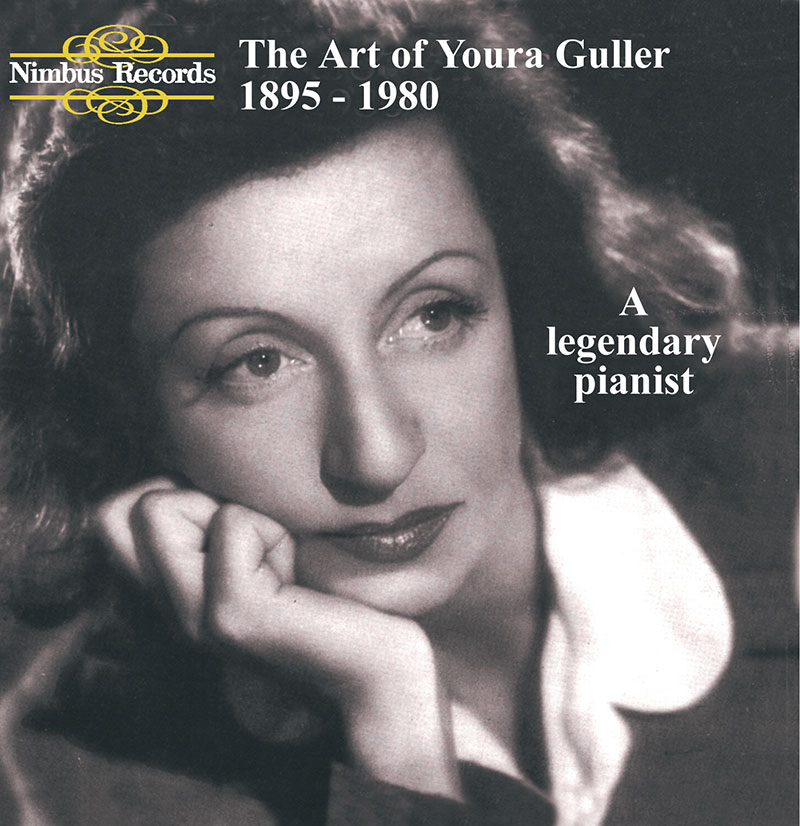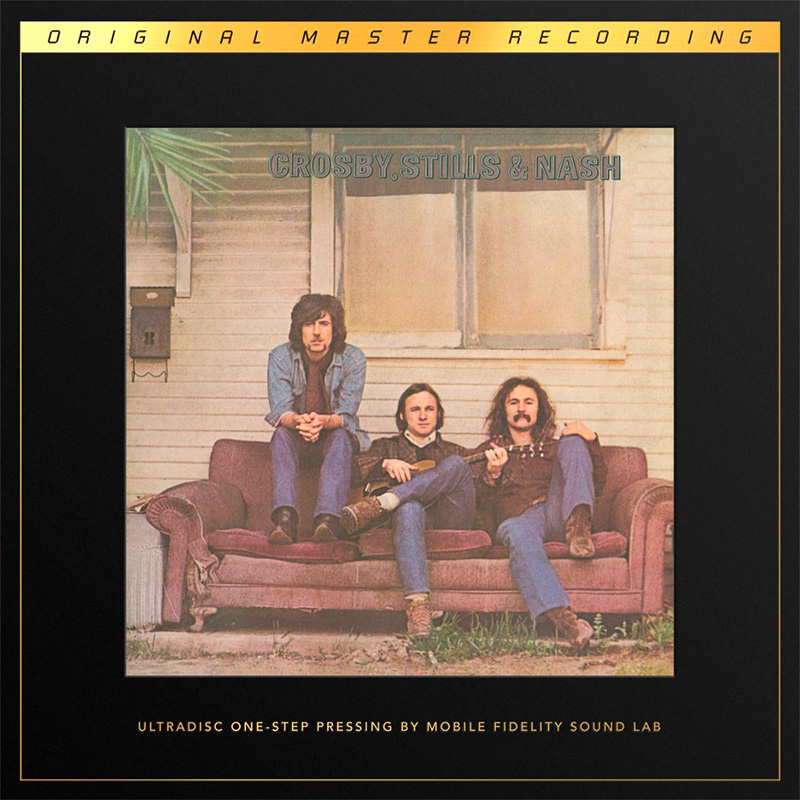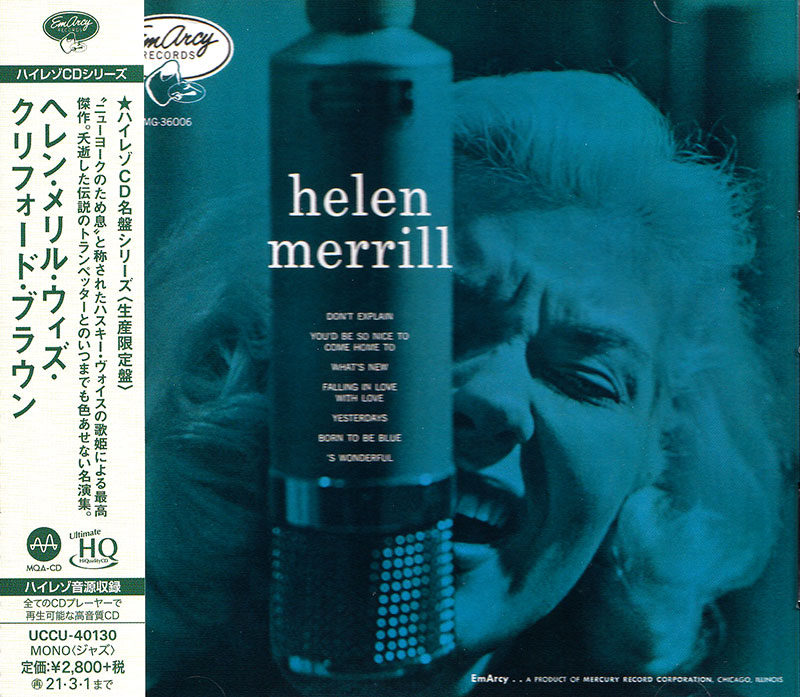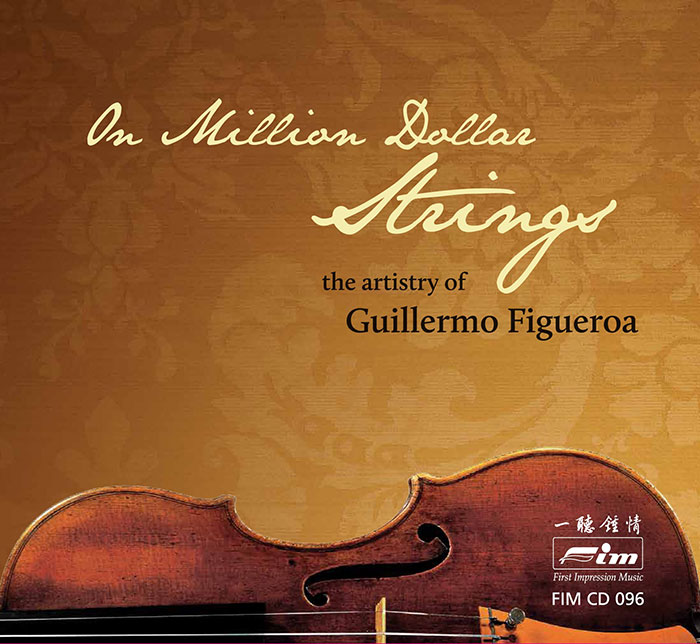Logowanie
OSTATNIE EGZEMPLARZE
Jakość LABORATORYJNA!
ORFF, Gundula Janowitz, Gerhard Stolze, Dietrich-Fischer Dieskau, Deutsche Oper Berlin, Eugen Jochum
Carmina Burana
ESOTERIC - NUMER JEDEN W ŚWIECIE AUDIOFILII I MELOMANÓW - SACD HYBR
Winylowy niezbędnik
ClearAudio
Essence MC
kumulacja zoptymalizowana: najlepsze z najważniejszych i najważniejsze z najlepszych cech przetworników Clearaudio
Direct-To-Disc
PIAZZOLLA, ChamberJam Europe
Tangos del Ángel y del Diablo
Direct-to-Disc ( D2D ) - Numbered Limited Edition
BACH, LISZT, COUPERIN, CHOPIN, GRANADOS, Youra Guller
The Art of Youra Guller

- 1 Bach/Liszt, Fantasia and Fugue in G minor BWV542 14.28
- 2 Prelude and Fugue in A minor BWV543 10.53
- 3 Mateo Albeniz, Sonata in D 2.26
- 4 Francois Couperin, La Fleurie ou la Tendre Nanette 2.30
- 5 Jean Philippe Rameau, Le Rappel des Oiseaux 3.22
- 6 Louis Daquin, Les Tourbillons 1.23
- 7 Claude Balbastre, Romance in C 2.48
- 8 Frederic Chopin, Etude in F minor Opus 25 No. 2 2.05
- 9 Ballade No. 4 12.08
- 10 Enrique Granados, 'Andaluza' from Danzas Espanoles Opus 37 4.33
- 11 'Oriental' from Danzas Espanoles Opus 37 5.21
- Recorded at Nimbus Studios September 1975
- Youra Guller - piano
- BACH
- LISZT
- COUPERIN
- CHOPIN
- GRANADOS
"The Art of Youra Guller is magnetically compelling." The Guardian Youra Guller was born in 1895 in Marseilles. Her father was Russian and her mother Romanian and at twelve she entered the Paris Conservatoire where she studied under Isidore Philipp. Clara Haskil, who was in Cortot’s class, was a contemporary. After graduating she made the acquaintance of Milhaud and performed his music, and that of the other members of Les Six, as well as specialising in Chopin and toured widely. She fled Paris in 1941 and returned to Marseilles where she met Haskil and her sister Jeanne. Guller seems to have been responsible for aiding Clara Haskil’s escape, though as Guller was herself a Jew she was in particular danger. She was ill for some time – living in Shanghai it’s said or maybe Bali for eight years -before resuming her career in 1955. She returned to London in that year and travelled to New York in 1971 to play at a recital in Carnegie Hall. Martha Argerich admired her and Nimbus recorded her in the studios in 1975. Perhaps typically, given the shrouded and sometimes fugitive nature of her life, the exact date of her death seems to be in some confusion; 1980 or 1981, and the location Geneva, Paris or London. "The Art of Youra Guller is magnetically compelling." The Guardian Reviews There is always a temptation to make legends out of the past. Leaving our own youthful susceptibility and inexperience out of count, we are all too prone to attribute superhuman virtues to artists heard in years gone by.Yet when suddenly one of these legendary figures makes a Phoenix-like return to the musical scene, as Mme Youra Guller has done in recent months, opening up enough vistas in music such as Beethoven's last sonata in C minor to transform interpretation into an act of creation in itself, inevitably the question arises again: was there something about life in days before subsidized musical education, jet aeroplanes, concerts eight nights a week, and an unbroken flow of notes over the radio, that fostered quality in place of quantity? For younger musicians of today, to whom Youra Guller is no doubt a total stranger, she can best be placed in perspective by a sentence in Mr Gerald Moore's book, Am I too Loud? Describing a 'Pianoforte Society' series of recitals planned at Wigmore Hall not long after the First World War, he lists the seven artists invited to take part as Moritz Rosenthal, Emil Sauer, Artur Rubinstein, Josef Hoffman, Alfred Cortot, Solomon and Youra Guller…whatever she chooses to play whenever she returns to this country, young musicians should not miss the chance of hearing her. They may get an occasional wrong note, or a bar or two of less than streamlined virtuosity. But they will be rewarded with music-making of Promethean might. Joan Chissell 1966. Reproduced by kind permission of Times Newspapers Limited. These recordings were made in September 1975, five or so years before her death. The finger-slips are not to me especially worrying, and are to be heard in the context of engaged and strong performances given at the age of eighty. Her Bach-Liszt enshrines elevated playing, a touch free and textually thickened in places. But there is clarity in her fugues, a quality that is sometimes occluded via her pedalling in the Preludes. This is perhaps an inevitable corollary of her age, but it hardly limits admiration for her playing as such. She evinces charm in the Mateo Albeniz Sonata, a very brief and delightful souvenir of her art on the smallest canvas imaginable. She is equally persuasive and imaginative in the Couperin, one of a sequence of baroque pieces for keyboard to which she brings precision and – in the case of the Rameau – pellucid dynamics. This is a good souvenir of Guller’s art. Despite its date it gives a reasonable indication of her repertoire interests, and the quality of her musicianship. Jonathan Woolf, Musicweb-international.com

























